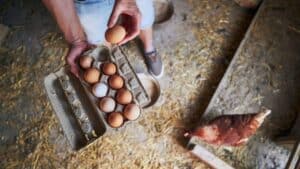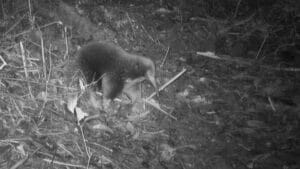In a remarkable display of veterinary expertise and quick thinking, a Husky’s life was saved through emergency heart massage performed in a Hull parking lot. This extraordinary event showcases the critical importance of immediate medical intervention and highlights the dedication of veterinary professionals who go above and beyond to save animal lives.
Dramatic rescue unfolds outside Hull veterinary clinic
When Rachel Armstrong noticed her 12-year-old Husky, Heidi, suddenly collapse with labored breathing and immobility, she immediately rushed to the nearest Vets Now clinic in Hull. What began as a routine day quickly transformed into a life-or-death situation when Heidi’s heart stopped beating as they arrived at the clinic’s parking lot.
Panicked and desperate, Rachel’s screams for help caught the attention of Dr. Susana Jauregui, who immediately rushed to the scene. Without hesitation, the experienced veterinarian began performing chest compressions right there on the concrete surface of the parking lot, demonstrating remarkable composure under extreme pressure.
The initial attempts to revive Heidi were unsuccessful, but Dr. Jauregui persisted. After several minutes of intense cardiac massage, a miracle occurred – Heidi’s heart began beating again. This crucial moment gave the veterinary team the window of opportunity they needed to continue life-saving measures.
Emergency situations like Heidi’s require immediate action, as demonstrated in this timeline of critical events:
- Initial collapse at home
- Ten-minute drive to the veterinary clinic
- Cardiac arrest upon arrival
- Immediate chest compressions in the parking lot
- Heartbeat restoration after several minutes
- Emergency transfer inside for further treatment
Cute Animal “Smiles” Might Not Mean What You Assume
150+ Eggs Each Morning? Essential Advice for Happy Hens and Peak Egg Output
Medical expertise saves Husky’s life
Once Heidi’s heartbeat was restored, the veterinary team swiftly moved her inside the clinic where they administered oxygen through intubation. The critical post-resuscitation care proved essential for the Husky’s survival prospects, as the first 24 hours after cardiac arrest are typically the most precarious.
Diagnostic tests revealed that Heidi was suffering from hypocalcemia – a dangerous condition characterized by severely deficient calcium levels. This finding allowed Dr. Jauregui’s team to implement targeted treatment protocols addressing the underlying cause of Heidi’s collapse.
Dr. Jauregui later described this incident as “one of the most intense days” of her professional career. The dramatic parking lot revival represents an exceptional example of veterinary medicine performed under extreme circumstances, showcasing both technical skill and emotional resilience.
The different types of emergency interventions available to veterinarians depend on the specific situation:
| Emergency Technique | Application | Success Rate |
|---|---|---|
| Chest Compressions | Cardiac Arrest | Variable (higher with immediate intervention) |
| Oxygen Therapy | Respiratory Distress | High when applied promptly |
| Intravenous Fluids | Shock, Dehydration | Very effective for stabilization |
| Medication Administration | Various Emergencies | Depends on condition and timing |
Why Are People Suddenly Sleeping with Bay Leaves Under Their Pillows?
"I Dropped 15 Kg Thanks to Intermittent Fasting — Here’s What I Eat in a Typical Day"
From critical condition to remarkable recovery
Following the initial emergency intervention, Heidi’s journey toward recovery began. Though her condition remained critical, the professional veterinary care and appropriate treatment for hypocalcemia gradually improved her health. Each day brought noticeable progress as the resilient Husky regained strength.
For Rachel Armstrong, the terrifying experience transformed into profound gratitude. The emotional impact of nearly losing her beloved companion, followed by witnessing an extraordinary revival, created an indelible memory. The bond between pet owners and the veterinary professionals who save their animals’ lives represents one of the most meaningful connections in animal healthcare.
Dr. Jauregui’s team continued monitoring Heidi’s progress even after she returned home. This comprehensive approach to patient care exemplifies the dedication veterinary professionals bring to their work, extending well beyond the dramatic moments of emergency intervention.
Heidi’s story serves as a powerful reminder that in veterinary medicine, a combination of swift action, technical expertise, and unwavering determination can literally make the difference between life and death. When a veterinarian performs a heart massage in a parking lot, it’s not just medical care – it’s an extraordinary act of commitment to saving a beloved family member.







